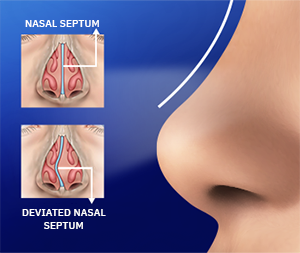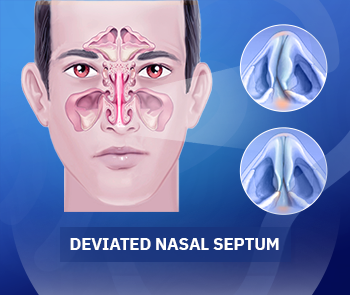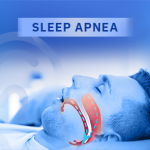Nasal Septum Deviation

Nasal septum deviation is a medical condition that affects many people and impacts both breathing and the overall appearance of the nose, studies show that up to 80% of people have some degree of deviation in the nasal septum. While some may not experience noticeable symptoms, this deviation can lead to various health problems.
In this article, we will discuss how nasal septum deviation can affect your quality of life and how to manage it with effective medical approaches.
- What is Nasal septum deviation
- Causes of Nasal septum deviation
- Symptoms of Nasal septum deviation
- Diagnosis of Nasal septum deviation
- Treatment of Nasal septum deviation
- Prevention of Nasal septum deviation
- When should you visit a doctor
What is Nasal septum deviation
The nasal septum is defined as a divider or barrier made of cartilage and connective tissue, dividing the nasal cavity into two separate passages, the nasal passages are located on either side of this septum and are lined with mucous membranes.
Nasal septum deviation, or septal deviation, is a condition where the nasal septum is significantly tilted to one side, causing one of the nasal passages to become narrower than the other.
Causes of Nasal septum deviation
The reasons for a deviated nasal septum can vary widely from person to person, the main causes include:
- Congenital defect: Some individuals are born with a deviated septum due to a malformation of the nasal septum during fetal development.
- Aging: With age, the structure of the nose changes, and the deviation of the nasal septum becomes more pronounced over time.
- During birth: A nasal deviation can occur due to pressure or trauma to the face during birth, studies have shown that about 20% of newborns have a congenital nasal septal deviation due to birth complications.
- Repeated trauma: Repeated blows or injuries to the nose are one of the main causes of nasal deviation, especially if a blow occurs to one side of the nose, these impacts often happen during play or sports activities.
Symptoms of Nasal septum deviation
A deviated nasal septum can cause various health problems that affect breathing and overall mood, however, in cases where the deviation is mild, it may not lead to any symptoms. Nevertheless, if the deviation is severe, some symptoms may appear, including:
Difficulty breathing:
A deviated septum can lead to blockage of one or both nasal passages, causing difficulty in breathing, this issue is often more noticeable when suffering from a cold or nasal allergies, as congestion and narrowing of the nasal passages make breathing harder.
Nasal congestion and headaches:
Since air doesn’t flow well through the nasal passages, a person may feel nasal congestion, which leads to pressure buildup in the head, causing headaches and facial pain.
Nosebleeds:
The dryness of the mucous membranes inside the nose can lead to frequent nosebleeds due to the difficulty of air passing through normally.
Snoring and sleep disturbances:
This is a common symptom for people with a deviated septum, as the blockage of nasal passages causes loud breathing while sleeping, it can also lead to sleep disorders like insomnia, preventing a healthy and natural sleep.
Frequent sinus infections:
The more blockage there is in the airways due to nasal deviation, the higher the likelihood of recurrent sinus infections, leading to ongoing health issues.
Preference for sleeping on one side:
Some people may prefer sleeping on one side to improve breathing through the nose at night if one of the nasal passages is obstructed.
Diagnosis of Nasal septum deviation
The diagnosis of a deviated septum is usually done through several methods that the doctor uses to determine the extent of the deviation and the associated issues, these diagnostic methods include:
Physical examination:
In most cases, the doctor can easily diagnose a deviated nasal septum during a physical examination, this allows the doctor to inspect the nasal passages and observe the extent of the deviation and any deformities in the nasal septum.
Nasal endoscopy:
It may be necessary to perform a nasal endoscopy, which involves inserting a thin, flexible tube with a camera through the nostril to get a detailed view of the nasal passages, this helps the doctor identify any issues that may not be visible during the physical examination.
Imaging tests:
The diagnosis may require imaging techniques such as a CT scan or MRI, these tests provide the doctor with a detailed image of the nasal structure, helping to determine the degree of the deviation and provide an accurate assessment.
Treatment of Nasal septum deviation
Treatment for a deviated septum depends on the severity of the condition, most people do not require treatment for a deviated septum because they do not experience severe symptoms, mild symptoms can be managed with medication, but if the deviation obstructs breathing abnormally, surgery may be needed.
Medication treatments:
- For mild cases of a deviated septum, medications that help improve nasal airflow can reduce associated symptoms, these medications include:
- Nasal decongestants: These help reduce swelling in the nasal tissues and keep the nasal passages open.
- Steroid nasal sprays: These sprays reduce inflammation in the nasal passages and improve airflow, which helps reduce congestion and nasal discharge.
- Antihistamines: These medications help reduce nasal congestion and runny nose, often used to treat allergy-related symptoms.
Surgical treatments:
- If medications do not relieve symptoms of a deviated septum, surgery may be necessary. These surgical options include:
- Septoplasty: The most common treatment for a deviated septum is septoplasty surgery. This procedure involves straightening the nasal septum by cutting and repositioning it, and sometimes replacing cartilage or bone.
- Rhinoplasty: In some cases, septoplasty may be combined with rhinoplasty, a procedure aimed at reshaping the nose for cosmetic purposes while also improving nasal function to facilitate breathing.
Prevention of Nasal septum deviation
In some cases, people are born with a deviated nasal septum, or it may develop as they grow during childhood, making prevention challenging. However, if you do not have a deviated septum, you can lower your risk of developing one by following these precautions:
- Use protective equipment, such as a face mask or helmet, during sports that may cause nasal injuries.
- Always wear a seatbelt while driving to prevent injuries from accidents.
When should you visit a doctor
If you experience any of the following symptoms, you should visit a doctor for a better evaluation of your condition:
- Breathing problems through the nose: If you have persistent difficulty breathing through your nose.
- Chronic sinus infections: If you suffer from frequent sinus infections that do not go away easily.
- Frequent nosebleeds: If you experience ongoing or abnormal nosebleeds.
- Severe facial pain: If you experience intense pain in the face, particularly in the nose or sinus areas.
- Sleep problems: If you experience sleep apnea or have difficulty getting deep and restful sleep.
Although a deviated septum may not be a serious health issue, it can significantly affect your daily life if not properly managed. Therefore, understanding the causes of a deviated septum, recognizing the symptoms that may accompany it, and exploring available treatment options are essential for effectively managing the condition and avoiding potential future complications.




